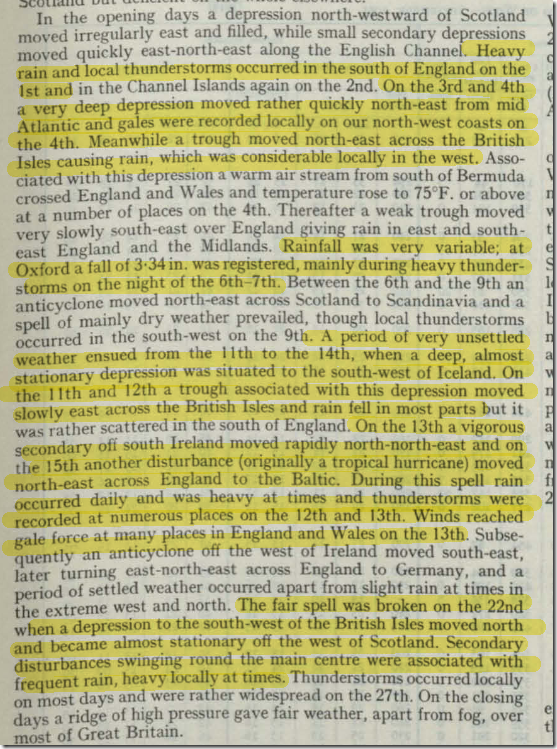September 1951–Wet & Windy
October 2, 2021
By Paul Homewood
Last month was pretty uneventful, pleasantly warm for the most part, with a couple of hot days thrown in. Not dissimilar in fact to September 1941.
The September of 1951 however was marked by frequent storms:
.
https://digital.nmla.metoffice.gov.uk/IO_6c22464c-2432-4922-994a-e5b843939817/
The daily record rainfall in Oxford has only been exceeded once since, in 1968.
3 Comments
Comments are closed.



Unlike September 2021, much to the concern of wind-subsidy harvesters who added more capacity than in 2020 & 2019:
As usual history shows-up all the weather worriers to be wrong
Very interesting!
In 1968 the Mendips had a rain system over it for about 3 weeks, ending in a huge burst on July 10th. The pumping station at Chew Stoke measured 7.69 ins of rain in 36 hours. The overall effect was to saturate a huge chalk system – and then some!
So far, so bad. However, neglect of the River Chew watercourse led to narrowed channels and overgrowing bushes/trees (we’ve heard that before!). The water/rubbish mass built up, and then, in a domino effect wiped out most of the bridges and demolished a (disused) railway viaduct at Pensford. 7 people were killed, and hundreds scared out of their wits.
Next to the Roman lead mines at Charterhouse, the drain through an earth bank carrying a country road blocked. The road was washed away, and a deluge of mud and water cannoned towards Cheddar Gorge. There, it deposited 9ft of silt in one of the caves in a couple of hours – as Time Team discovered when trying to explore the cave. They still managed to find some remains of ancient animals before the allotted time ended.
Back near the lead mines – which were a major reason for the Roman invasion – the mud filled the “settling ponds”, which now look like flat fields. Silver, a by-product of the lead processing, is said to have paid for the entire Roman Army occupation, though I only have anecdotal information on that.
As usual, the Somerset Levels had a caning. I was working in Taunton and my car was flooded – some 50 miles from the Mendips.